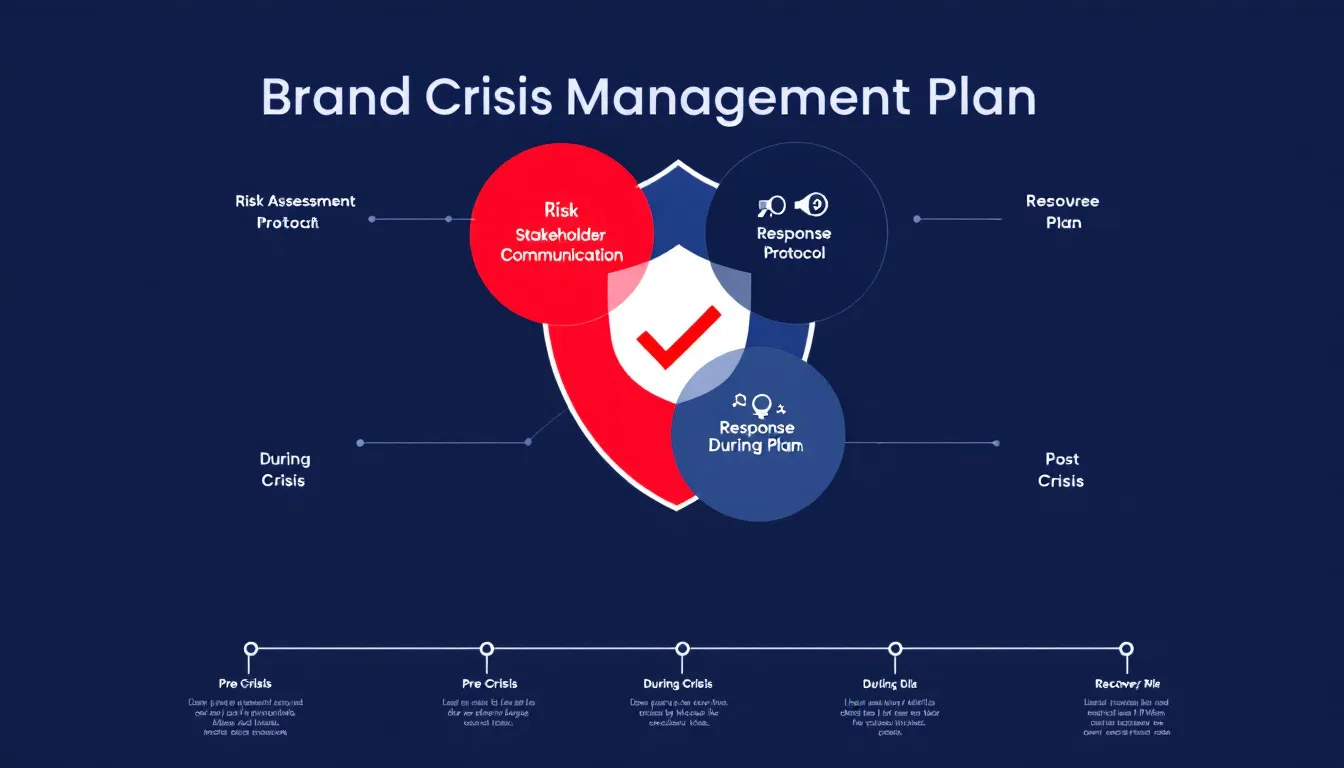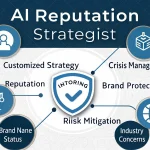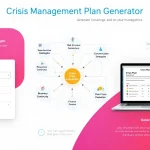Is this tool helpful?
How to Use the Brand Crisis Management Plan Generator Effectively
To create a comprehensive crisis management plan using this tool, follow these step-by-step instructions:
- Company Name: Enter your organization’s full legal name. For example, “Global Tech Solutions Inc.” or “Harmony Healthcare Systems”
- Potential Risks: List specific crisis scenarios that could impact your business. Be detailed and industry-specific. For instance:
- Cybersecurity breach exposing customer data
- Product safety recalls
- Employee misconduct allegations
- Supply chain disruptions
- Environmental incidents
- Key Stakeholders: Identify all relevant parties affected by potential crises:
- Board members and shareholders
- Customer segments (B2B, B2C)
- Regulatory bodies
- Local communities
- Industry partners
- Industry Type: Specify your business sector for targeted recommendations
- Previous Crises: Document past incidents and their outcomes for reference
Understanding Brand Crisis Management Plans
A brand crisis management plan is a strategic framework designed to protect and maintain an organization’s reputation during challenging situations. This tool generates customized crisis management strategies based on your specific business context and potential risks.
Core Components of Crisis Management
- Risk Assessment and Identification
- Stakeholder Communication Protocols
- Response Team Structure
- Action Timeline Templates
- Media Management Guidelines
Benefits of Using the Crisis Management Plan Generator
Immediate Advantages
- Rapid plan development and deployment
- Customized risk mitigation strategies
- Structured stakeholder communication frameworks
- Industry-specific best practices integration
Long-term Benefits
- Enhanced brand resilience
- Improved stakeholder confidence
- Reduced response time during crises
- Better resource allocation
Problem-Solving Capabilities
Risk Identification and Assessment
The tool systematically evaluates potential threats based on:
- Industry vulnerability patterns
- Historical incident data
- Stakeholder impact analysis
- Operational dependencies
Response Strategy Development
Creates targeted action plans addressing:
- Internal communication protocols
- External stakeholder management
- Media response templates
- Legal compliance requirements
Practical Applications and Examples
Case Study 1: Technology Company
A software company using the tool to prepare for:
- Data breach scenarios
- Service outage management
- Competitive threats
- Regulatory changes
Case Study 2: Retail Organization
A retail chain implementing plans for:
- Product safety issues
- Supply chain disruptions
- Store safety incidents
- Customer satisfaction crises
Best Practices for Implementation
- Regular plan updates and reviews
- Team training and simulation exercises
- Stakeholder feedback integration
- Documentation and learning capture
Frequently Asked Questions
How often should I update my crisis management plan?
Review and update your plan quarterly, or whenever significant changes occur in your business environment, organizational structure, or stakeholder relationships.
What makes an effective crisis response team?
An effective crisis response team includes representatives from key departments (Communications, Legal, Operations, HR), clear leadership roles, and defined escalation procedures.
How can I ensure stakeholder confidence during a crisis?
Maintain transparent communication, demonstrate proactive management, and provide regular updates through appropriate channels to maintain stakeholder trust.
What role does social media play in crisis management?
Social media serves as a critical communication channel for real-time updates, stakeholder engagement, and reputation management during crisis situations.
How can I measure the effectiveness of my crisis management plan?
Evaluate response times, stakeholder feedback, media coverage sentiment, and operational recovery metrics to assess plan effectiveness.
Should small businesses have crisis management plans?
Yes, organizations of all sizes benefit from crisis management planning, as reputation protection is crucial for business sustainability regardless of company size.
Strategic Implementation Guidelines
Pre-Crisis Preparation
- Establish monitoring systems
- Develop response templates
- Create stakeholder contact lists
- Define escalation procedures
Crisis Response Execution
- Activate response teams
- Implement communication protocols
- Monitor situation development
- Document all actions taken
Post-Crisis Recovery
- Assess impact and effectiveness
- Update procedures based on learnings
- Strengthen stakeholder relationships
- Implement preventive measures
Key Success Factors
Effective crisis management plans depend on:
- Leadership commitment and support
- Clear communication channels
- Regular training and updates
- Stakeholder engagement
- Resource availability
- Continuous improvement processes
Important Disclaimer
The calculations, results, and content provided by our tools are not guaranteed to be accurate, complete, or reliable. Users are responsible for verifying and interpreting the results. Our content and tools may contain errors, biases, or inconsistencies. We reserve the right to save inputs and outputs from our tools for the purposes of error debugging, bias identification, and performance improvement. External companies providing AI models used in our tools may also save and process data in accordance with their own policies. By using our tools, you consent to this data collection and processing. We reserve the right to limit the usage of our tools based on current usability factors. By using our tools, you acknowledge that you have read, understood, and agreed to this disclaimer. You accept the inherent risks and limitations associated with the use of our tools and services.







